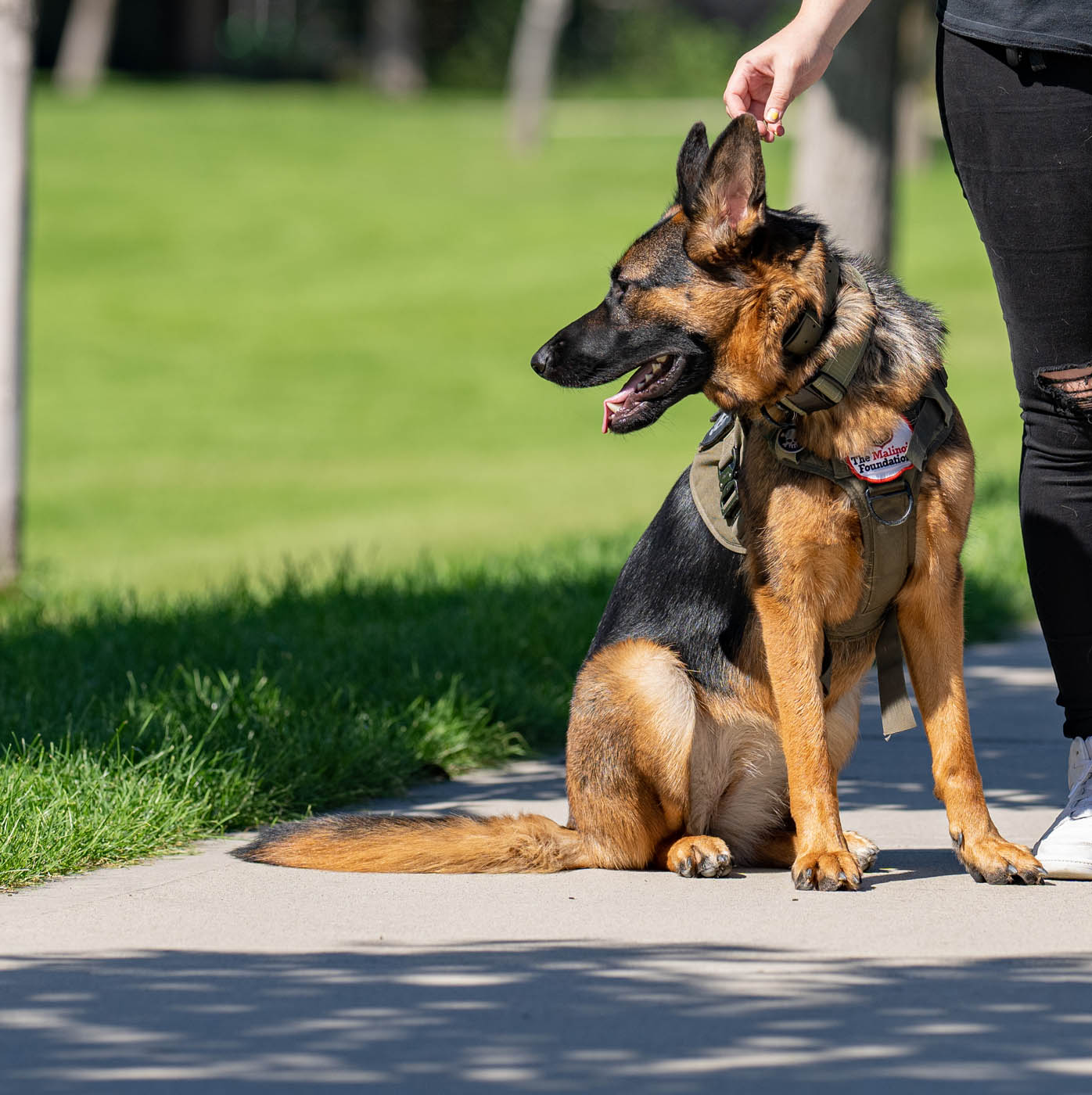Unleash Potential with Dog Training Near Me: Find Your Local Specialists
Unleash Potential with Dog Training Near Me: Find Your Local Specialists
Blog Article
The Ultimate Guide to Dog Training: Building a Delighted, Obedient Pet Dog
Efficient pet dog training is a multifaceted procedure that rests on a deep understanding of canine habits and the application of tried and tested techniques. By welcoming positive reinforcement and regular command usage, animal proprietors can cultivate not just obedience but also a solid, relying on partnership with their canines. The trip does not finish with standard commands; addressing behavioral problems and creating a nurturing training atmosphere are similarly critical components. As we explore these aspects, it ends up being noticeable that the course to a content and well-behaved canine buddy may hold a lot more intricacies than one could originally think.

Recognizing Dog Habits
How does a dog's actions show its psychological and mental state? A canine's activities can offer as a window right into its feelings, demands, and general psychological health. A wagging tail typically symbolizes happiness and exhilaration, while a lowered tail might indicate anxiety or submission. In a similar way, vocalizations such as whimpering or barking can communicate a range of emotions, from happiness to distress.
Body movement also plays an essential role in comprehending canine habits. A relaxed position and open mouth signal comfort, whereas strained muscles and pinned ears may suggest anxiety or hostility. Observing these signals is important for determining the origin causes of a pet dog's actions, whether it originates from exhilaration, aggravation, or worry.
In addition, a pet's communication with its setting and various other animals can provide understanding right into its emotion. For instance, a dog that involves playfully with other pets is most likely sensation safe and social, while one that exhibits avoidance or hostility may be experiencing tension or insecurity. Comprehending these behavioral signs is vital for cultivating a solid connection in between the proprietor and the pet dog, eventually contributing to the dog's psychological health and wellness and health.
Necessary Educating Techniques
Reliable pet training methods are vital for fostering preferable habits and strengthening the bond in between a canine and its proprietor. Utilizing favorable reinforcement is just one of the most reliable techniques, where benefits such as deals with, praise, or play are offered to enhance wanted habits (dog training charlotte nc). This encourages the dog to duplicate those actions, developing a positive learning setting
Uniformity is an additional crucial component in canine training. Commands need to be consistent and clear, and all family members have to apply the exact same regulations to avoid perplexing the dog. Timing is similarly vital; rewards must be offered right away after the wanted behavior to develop a clear connection between the activity and the incentive.
Furthermore, engaging and short training sessions work, as pets have differing interest spans. Go for sessions of 5 to 15 mins, depending on the canine's age and energy level. Including play into training can also enhance motivation and pleasure for both the owner and the pet dog.
Lastly, persistence is critical. Dogs learn at their own speed, and keeping a calm behavior will assist minimize disappointment, making certain a favorable training experience. These important techniques prepared for successful pet training and Our site an unified relationship.
Fundamental Commands to Educate

Usage deals with, appreciation, and playtime to compensate your canine's successes. By instilling these standard commands, proprietors equip their pet dogs with the skills required for a mannerly and unified partnership.
Resolving Common Behavioral Problems
Comprehending and resolving typical behavioral issues in dogs is important for fostering a harmonious connection between pet dogs and their owners. Lots of dogs exhibit habits such as extreme barking, eating, or hostility, which can originate from stress and anxiety, monotony, or absence of correct training. Determining the source of these behaviors is the initial step toward reliable intervention.
For instance, extreme barking might suggest a need for attention or a feedback to ecological stimulations. In such situations, owners need to analyze the pet dog's setting and give sufficient psychological excitement, such as interactive toys or normal exercise. Eating can frequently be managed by rerouting the habits to suitable eat products and ensuring that the canine has adequate exercise to minimize dullness.
Aggressive actions calls for mindful handling and may require professional training help. It's critical to understand that punishment can exacerbate anxiety and aggressiveness, bring about a cycle of behavior issues. Rather, focus on favorable support methods to compensate preferable habits and reinforce a complacency.
Building a Favorable Training Atmosphere
Creating a favorable training atmosphere is essential for strengthening desirable behaviors in dogs and alleviating behavioral problems. This environment ought to be identified by consistency, encouragement, and a clear understanding of the training objectives. By establishing a routine, canines discover what is anticipated of them, which assists decrease anxiety and confusion.
Using favorable support methods, such as deals with, appreciation, and play, promotes a feeling of safety and inspiration in the dog. Rewarding etiquette right away and continually reinforces the preferred actions, making the training process more efficient - Dog training. Furthermore, trainers need to stay person and tranquility, as canines are see post delicate to their trainers' emotions
The training space should be devoid of disturbances to guarantee the pet can concentrate on the tasks handy. Take into consideration making use of a quiet room or a safe and secure outside area. Including play and socialization into training sessions promotes a well-rounded technique, boosting the pet's understanding experience.
Eventually, a positive training environment nurtures a solid bond in between the pet and trainer, bring about an obedient, satisfied pet dog. By prioritizing this setting, animal owners can effectively deal with behavioral challenges and cultivate a successful training trip.
Final Thought
Efficient dog training depends on a detailed understanding of canine habits and the application of favorable reinforcement techniques. Taking on these concepts makes certain a satisfying training experience for both pet dogs and their owners.
Reliable canine training is a diverse procedure that pivots on a deep understanding of canine habits and the application of tested techniques. A dog that involves playfully with other dogs is most likely feeling safe and social, while one that shows evasion or aggressiveness may be experiencing anxiety or insecurity.Reliable canine training strategies are vital for cultivating desirable behaviors and reinforcing the bond between a pet and its proprietor.Developing a favorable training environment is essential for enhancing desirable actions in canines and minimizing behavior problems.Effective dog training depends on a comprehensive understanding of canine actions and the application of favorable reinforcement techniques.
Report this page